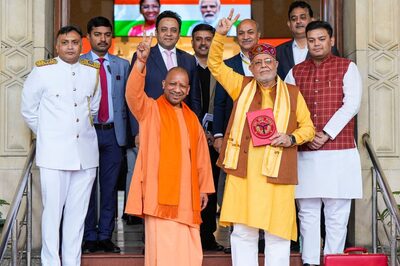
views
In its latest petition to a parliamentary standing committee, the Society of Manufacturing of Electric Vehicles said India needed the FAME III policy, tweaking a few rules and extending the subsidy scheme by another few years to see the EV (electric vehicle) revolution in the country.
FAME, short for faster adoption and manufacturing of hybrid and electric vehicles, is a central government incentive scheme aimed at encouraging the adoption of electric and hybrid vehicles. The document by SMEV highlighted that FAME I and II helped India’s EV ecosystem but also explained what else was required to propel India into the final leg of its quest to reduce fossil fuel dependency.
It stated: “China controlled the global battery market — still does. EV components had no market and, hence, Indian OEMs (original equipment manufacturers) were not willing to change supply lines,” adding but FAME policies changed it. By 2015, when FAME I came into effect and until 2019, when FAME II policy guidelines came into effect, the market had grown to 2.3 Lach units including both high and low-speed electric two-wheelers.
According to the document, the monthly average of 65,000 units in recent months equates to 5 percent of the traditional scooter market, falling just short of the industry’s 7 percent projection. Despite the incentivised subsidy scheme that allowed a dozen startups and MSMEs to begin operations and the industry’s enthusiasm, China was still the largest global supplier of batteries and components.
“South Asia and India have to first inundate the lowest and biggest segment of its transportation model — the private two-wheelers, which account for 1.25 crore numbers in the FY22 and almost 73% of the total transportation market in India,” the document stated.
It further stated that based on the success of FAME I and II, the Centre had set a target of an increase by five times — an ambitious but not impossible goal, which can be achieved by some revisions to the FAME II policy.
“An extension of the policy under FAME III, for instance, would make sure the momentum is maintained,” the SMEV said, adding, “relaxation of norms will bring back players who scaled down or opted out due to stringent conditions from manufacturing high-speed vehicles; waiver of some conditions based on realistic limitations of component availability, and a long-term stable policy to help businesses plan their investments… All these can thrust India into the next and final run for its freedom from fossil fuel dependency, and pollution.”
What the industry thinks
Ankit Mittal, co-founder and CEO of Sheru, agreed with the fact that for India’s EV industry, particularly for its two and three-wheelers, FAME had been a game changer. “FAME I and II have been pivotal in the creation of this. However, India’s EV industry is still in its nascent stages and needs support till the technology matures and gains wider consumer acceptance,” he said.
He added: “The continuation of the FAME scheme in the form of FAME III would help establish the technology and ensure its sustained growth. For India to hold a leadership position in the technology of the future and for its auto industry to maintain its dominant position in the global auto industry, a FAME III is essential.”
Manu Iyer, co-founder of Fyn Mobility, told News18 that the FAME policies had been instrumental in making EVs more affordable to the Indian market and in encouraging the ecosystem to localise the manufacturing of different parts. According to him, this has also resulted in the mushrooming of quality startups and others companies that have been able to add depth to the industry.
“It is important to continue the FAME policy, whether as an extension of FAME II or by creating a new refined policy as FAME III. It might make sense to release a FAME III policy to take into account the evolved environment on the ground in Indian EVs and allow for a phased withdrawal over a longer period,” Iyer added.
Read all the Latest Auto News here



















Comments
0 comment